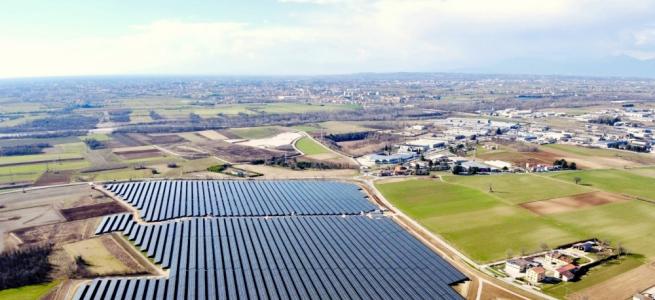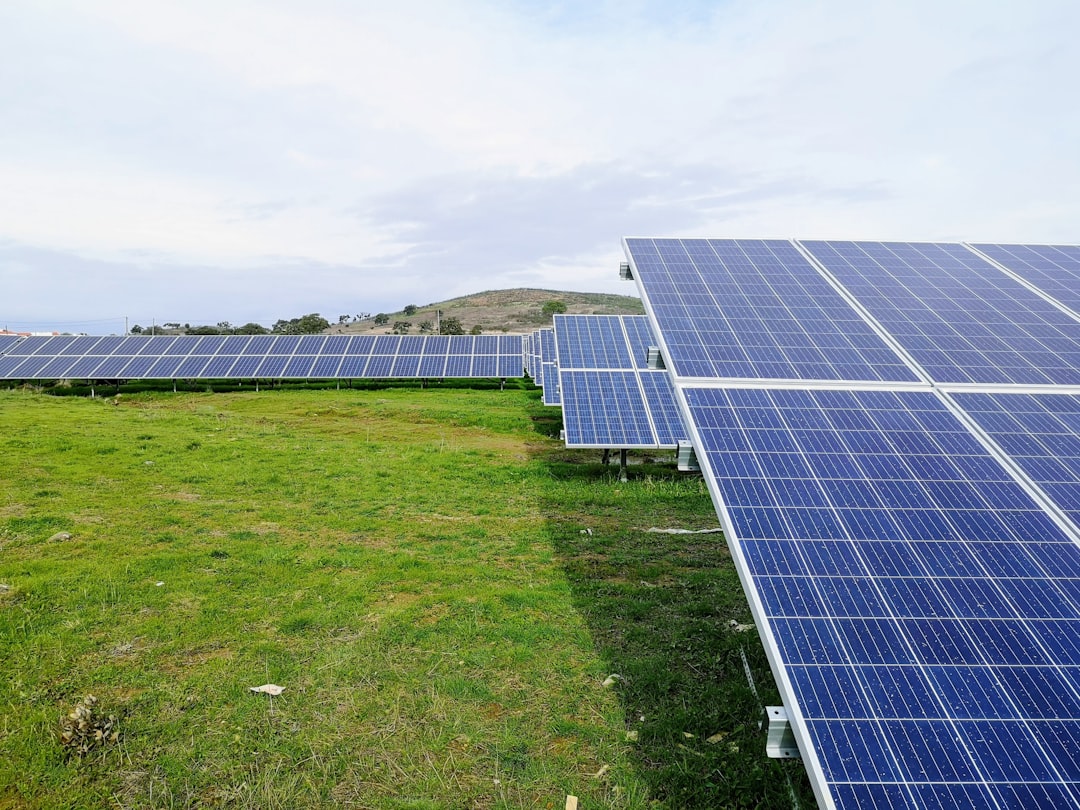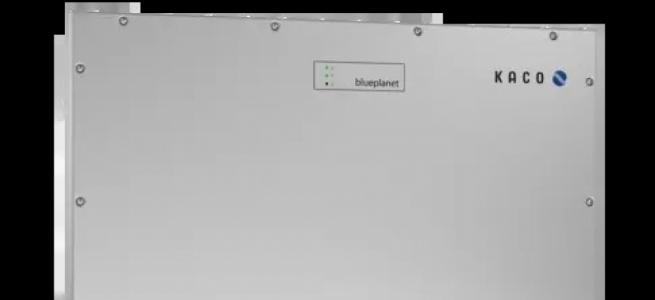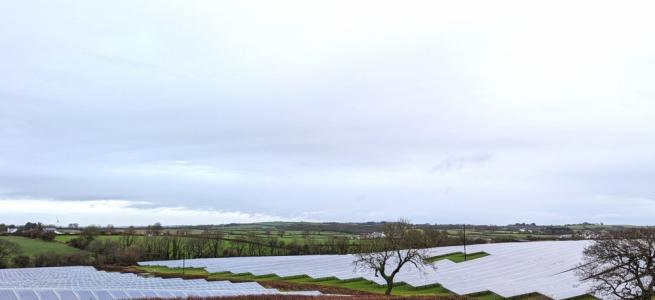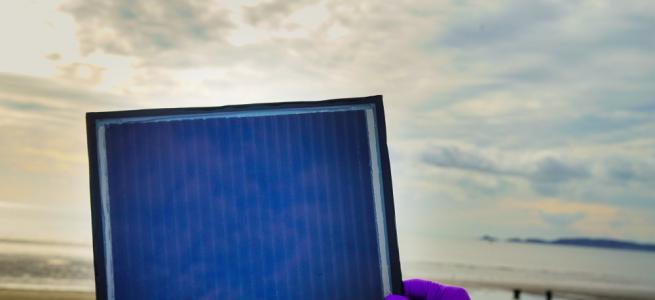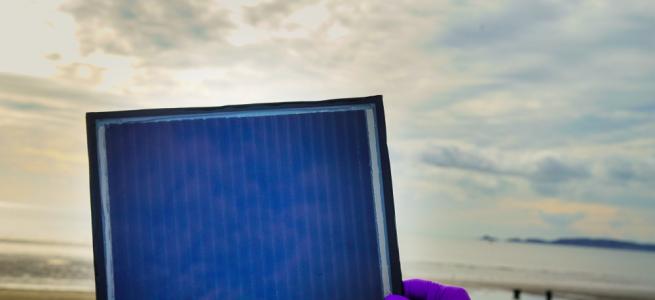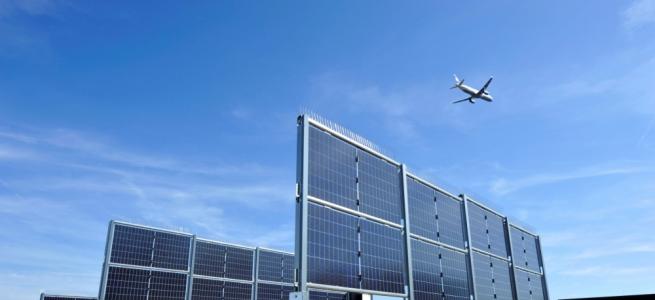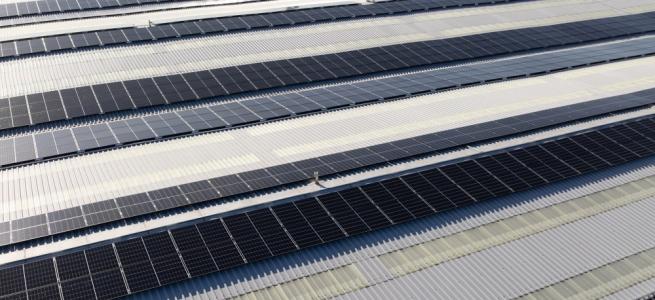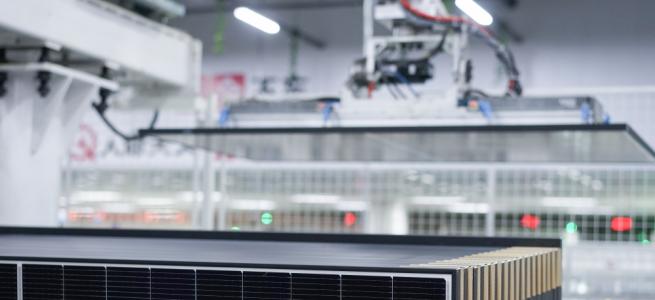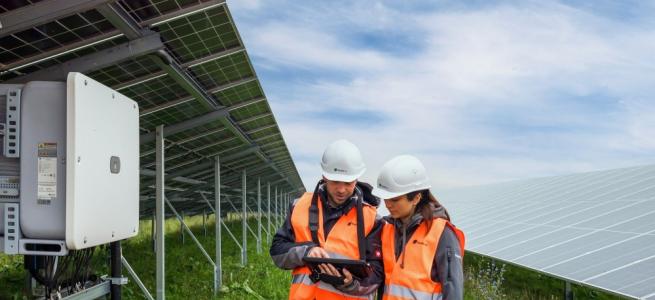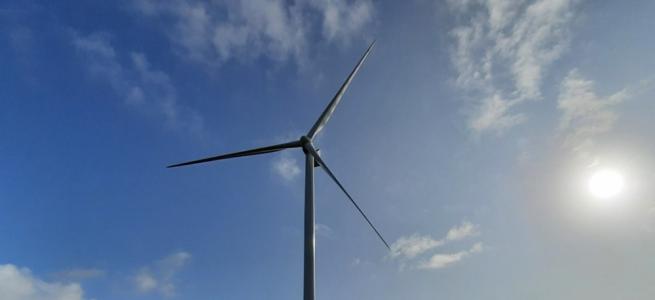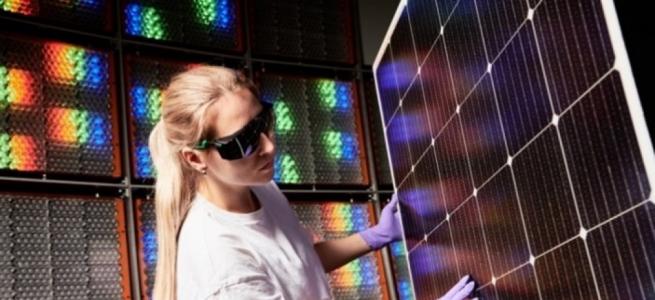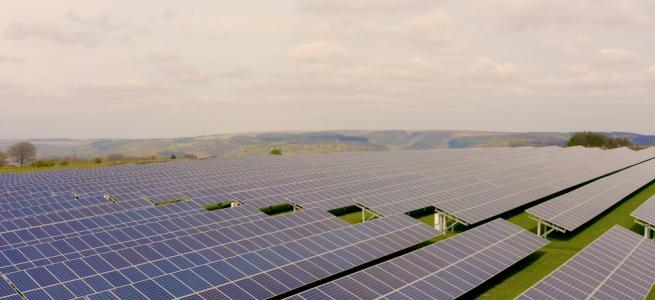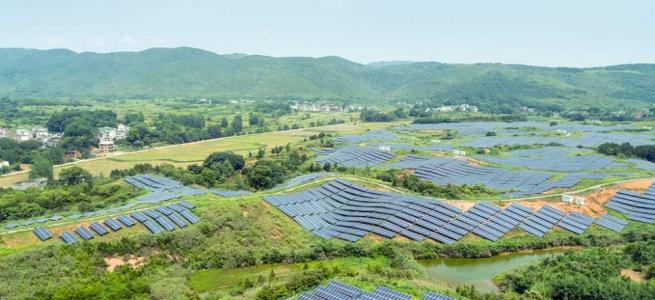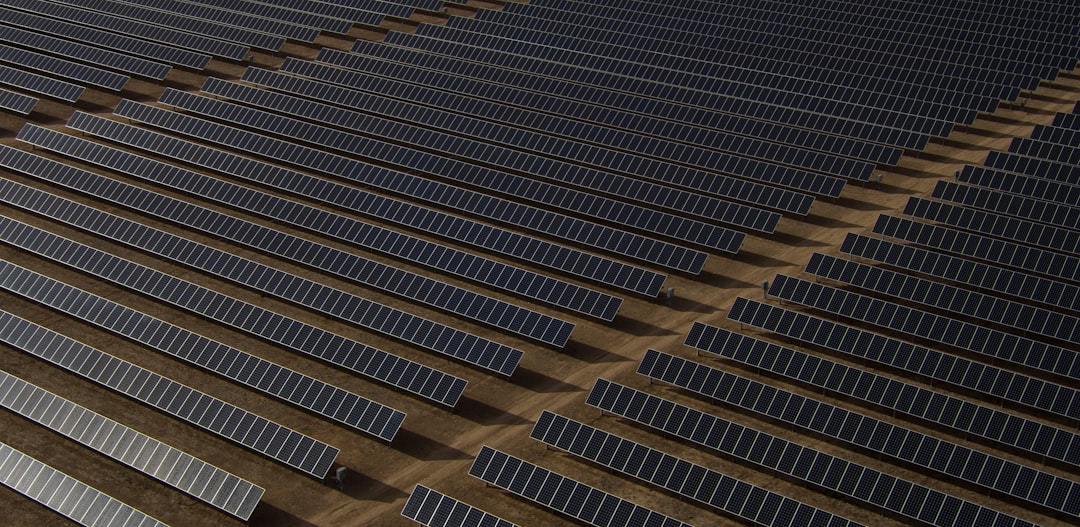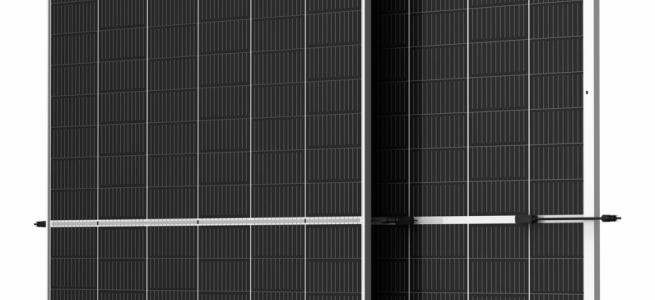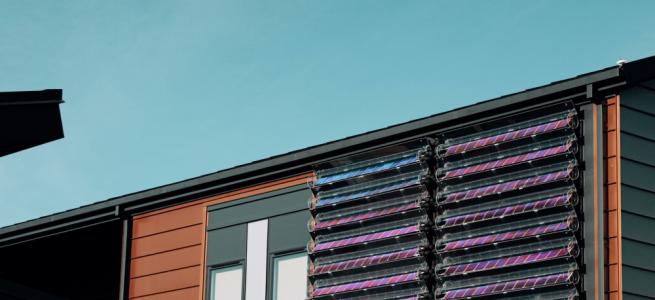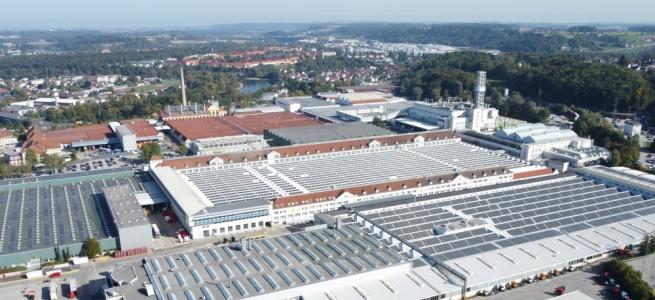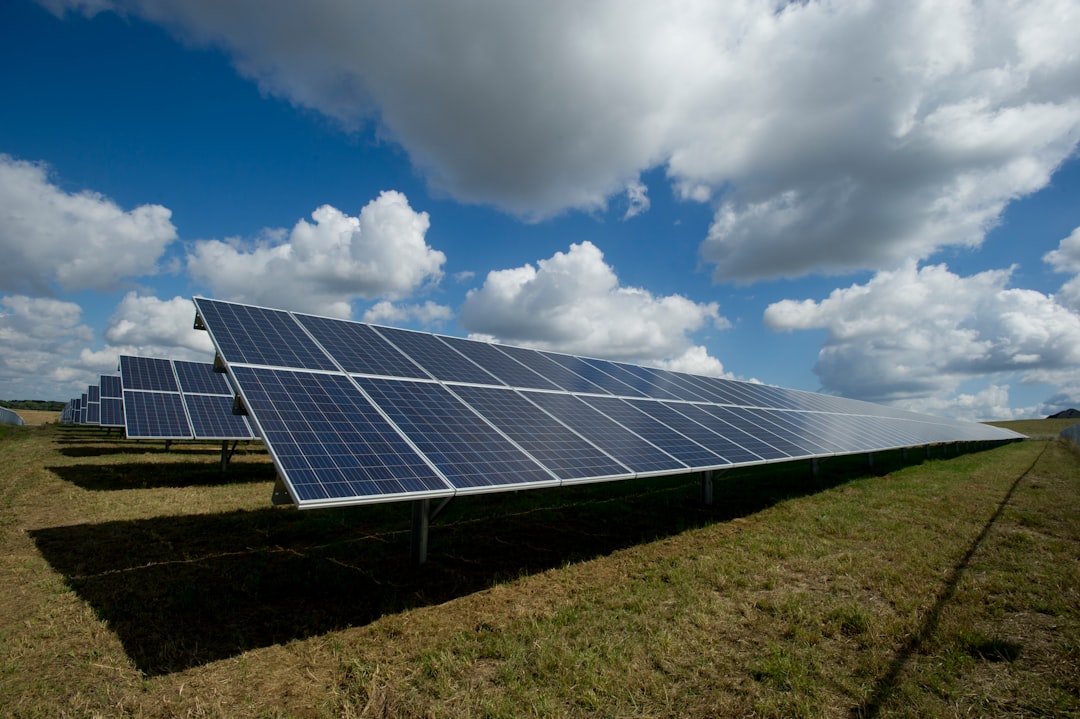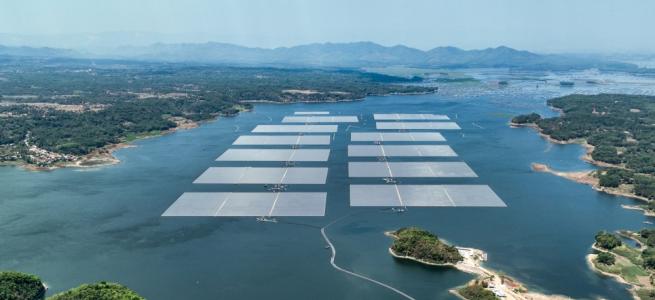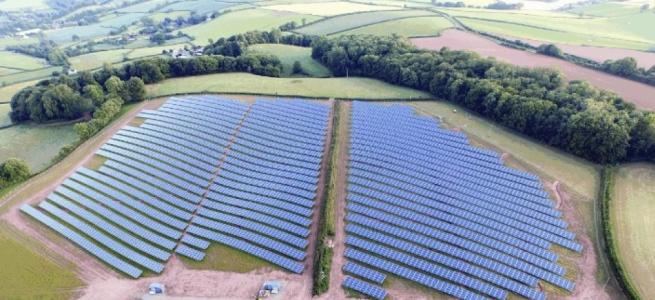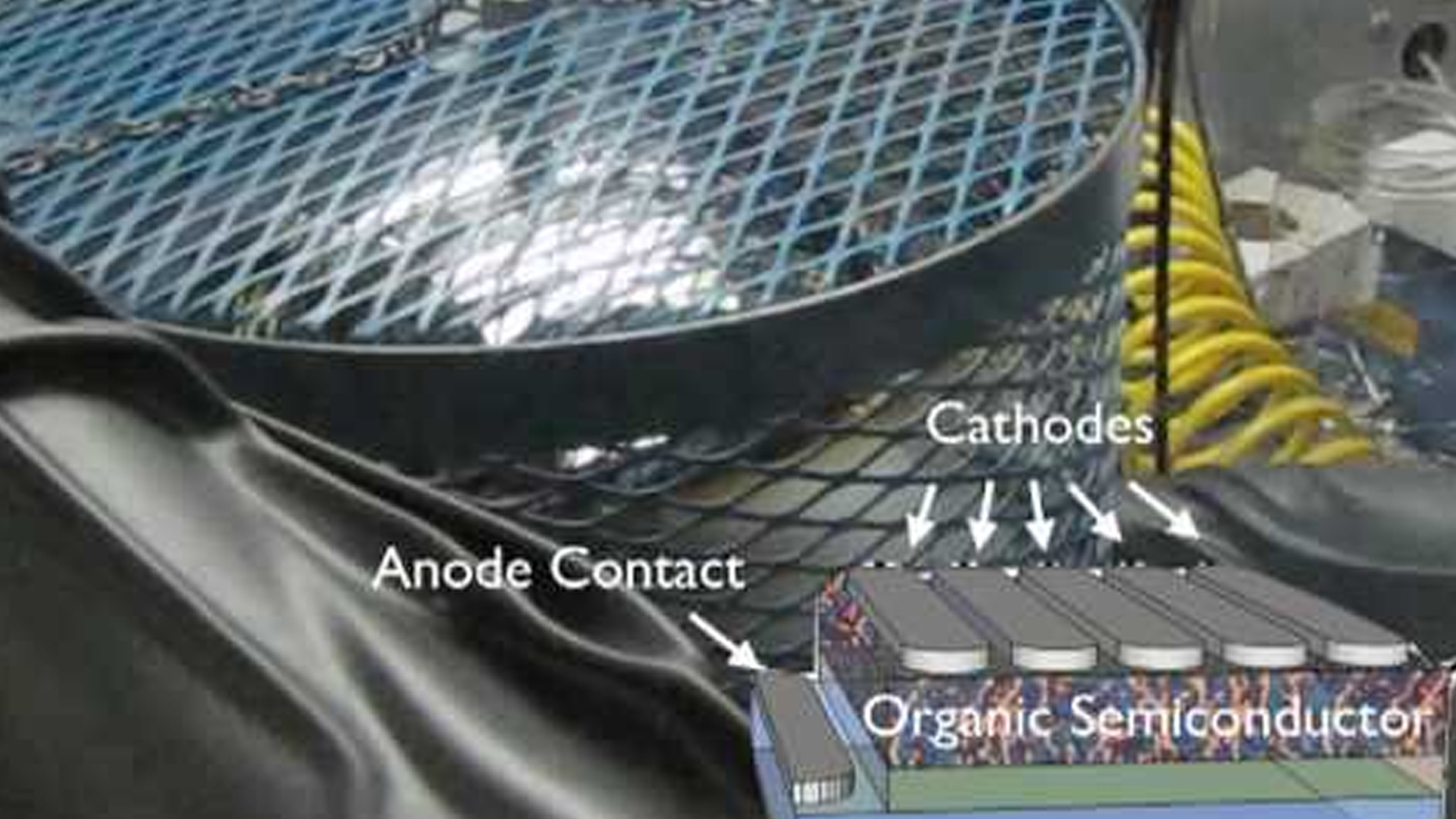Ultra Thin GaAs Solar Cells Reach Nearly 20 Percent Efficiency
French and German researchers build solar cell from 205nm GaAs on nanostructured back mirror
Researchers
at the French Centre de Nanosciences et de Nanotechnologies (C2N) have
succeeded, in collaboration with researchers at Fraunhofer ISE and
others, to efficiently trap sunlight in a solar cell thanks to an
ultrathin absorbing layer made of 205 nm-thick GaAs on a nanostructured
back mirror. With this new process of fabrication, an efficiency of
nearly 20 percent was obtained.
Up to now, the state-of-the-art 20 percent-efficient solar cells fabricated from GaAs required at least 1 micrometer-thick layers of semiconductor material, or even 40 µm or more in the case of silicon. Thinning the absorber automatically reduces absorption of sunlight and conversion efficiency. A flat mirror at the backside of the cell can help and lead to double-pass absorption, but no more. Yet, a stronger thickness reduction would enable material savings of scarce materials and industrial throughput improvements due to shorter deposition times. But previous attempts of light trapping have been greatly limited in performance by the optical and electrical losses.
Researchers of the team led by Stéphane Collin at the Centre for Nanoscience and Nanotechnology - C2N (CNRS/Université Paris-Saclay), in collaboration with Fraunhofer ISE in particular, have developed a new strategy to trap light in ultrathin layers made of only 205 nm-thick GaAs. The guiding idea was to conceive a nanostructured back mirror to create multiple overlapping resonances in the solar cell, identified as Fabry-Perot and guided-mode resonances.
They constrain light to stay longer in the absorber, resulting in efficient optical absorption despite the low quantity of material. Thanks to numerous resonances, absorption is enhanced over a large spectral range that fits the solar spectrum from the visible to the infrared. Controlling the fabrication of patterned mirrors at the nanometer scale was a key in the project. The team used nanoimprint lithography to directly emboss a sol-gel derived film of titanium dioxide, an inexpensive, rapid and scalable technique.
The picture above shows (left) sketch of an ultrathin solar cell made of GaAs with a nanostructured back mirror and (right) photograph of a sample showing the diffraction effect of a nanostructured mirror in air (coloured shine) and the absorption enhancement effect in ultrathin solar cells (square black areas).
“Together with our French partners we are very happy about this result and its publication in the renowned journal Nature Energy,
says Frank Dimroth, Head of the Department III-V Photovoltaics and
Concentrator Technology at Fraunhofer ISE. And he adds: “We expect to
be able to even further improve the efficiency of ultrathin solar
cells”.
The work published in Nature Energy demonstrates that this architecture should enable 25 percent efficiency in the short term. Even if the limits are still unknown, researchers are convinced that the thickness could be further reduced without efficiency loss, at least by a factor of two. GaAs solar cells are still commercially limited to space application due to their cost. However, researchers are already working to extend this concept for large-scale photovoltaics made of e.g. CdTe, CIGS or silicon materials.


